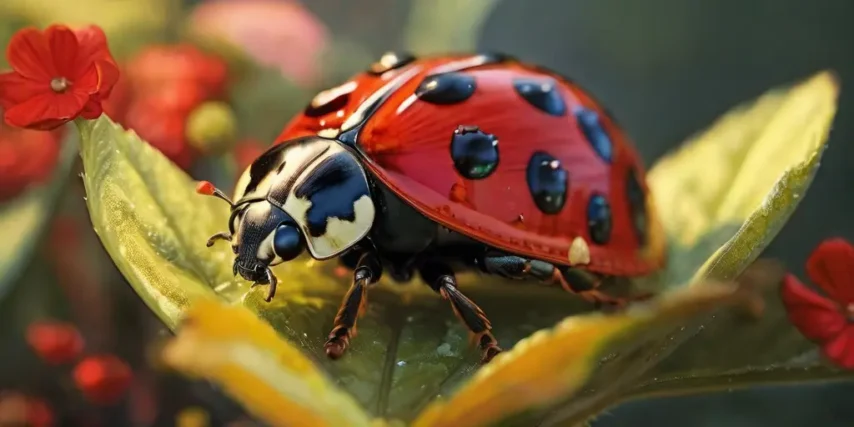The Fascinating Lifecycle of Ladybugs: A Journey Through Time
Ladybugs, those charming little insects adorned with vibrant spots, have long captured the fascination of both young and old alike. From their striking appearance to their beneficial role in nature, there’s much to uncover about these delightful creatures. One of the questions frequently asked is, “How long do ladybugs live?” To answer this query thoroughly, we embark on a journey through the captivating lifecycle of ladybugs.
Introduction to Ladybugs:
Ladybugs, scientifically known as Coccinellidae, are part of the beetle family. With over 5,000 species worldwide, these tiny beetles come in various colors and patterns, though the most recognized is the red or orange shell with black spots.

Lifecycle Stages:
Ladybugs undergo a complete metamorphosis, progressing through four distinct stages: egg, larva, pupa, and adult. Each stage is fascinating in its own right and contributes to the overall lifespan of the ladybug.
1. Egg Stage:
The journey begins when a female ladybug lays a cluster of tiny eggs on the underside of leaves, typically near aphid colonies, providing a readily available food source for the emerging larvae. Ladybug eggs are yellow or orange in color and shaped like tiny barrels. Depending on the species and environmental conditions, the egg stage typically lasts around 3 to 5 days.
2. Larva Stage:
Upon hatching, the ladybug larvae emerge hungry and ready to feed. Unlike their adult counterparts, ladybug larvae resemble tiny alligators with elongated bodies and spiky protrusions. They voraciously consume aphids, mealybugs, and other soft-bodied insects, growing rapidly over the course of 2 to 4 weeks.

3. Pupa Stage:
After reaching a certain size, the larva attaches itself to a leaf or stem and enters the pupa stage. During this transformative period, the larva encases itself in a protective shell, known as a pupa, where it undergoes a remarkable metamorphosis. Inside the pupa, tissues reorganize, and the adult ladybug begins to form. The pupa stage typically lasts around 7 to 12 days.
4. Adult Stage:
Emerging from the pupa, the adult ladybug unfurls its delicate wings and displays its vibrant colors for the first time. As fully formed adults, ladybugs continue their vital role in the ecosystem by preying on pest insects, thus aiding in natural pest control. The adult stage of a ladybug’s life can vary in duration, with some species living only a few weeks while others may persist for up to a year.
Factors Influencing Lifespan:
Several factors influence the lifespan of ladybugs, including species, environmental conditions, and availability of food sources. While some species may live for just a few weeks, others can survive for several months or even overwinter as adults.

Longevity Records:
Though ladybugs are typically short-lived insects, some species have been known to defy expectations with impressive longevity. One notable example is the Convergent Lady Beetle (Hippodamia convergens), which holds the record for the longest-lived ladybug, with individuals documented living for up to two to three years in the wild.
Conclusion:
In conclusion, the lifespan of ladybugs varies depending on factors such as species, environmental conditions, and available food sources. From their humble beginnings as tiny eggs to their emergence as vibrant adults, ladybugs play a crucial role in maintaining ecological balance by controlling pest populations. Whether living for just a few weeks or several months, these charming insects continue to captivate and inspire awe with their remarkable lifecycle. So, the next time you spot a ladybug meandering through your garden, take a moment to appreciate the journey it has undertaken and the vital role it plays in the intricate tapestry of nature.







